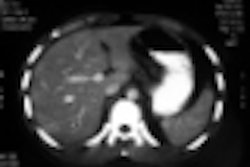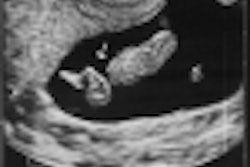Abnormal vasoactivity of the coronary and peripheral arteries has been demonstrated in patients with coronary artery disease. Assessing arterial dilation through ultrasound measurements of the brachial artery diameter can be used to predict endothelial dysfunction, a risk factor known to predispose to atherosclerosis and its complications in later life.
Professor David Celermajer, from the department of cardiology, Royal Prince Alfred Hospital in Sydney, presented an overview of this research at the 2001 Australian Society for Ultrasound in Medicine meeting in Sydney earlier this month.
"One of the earliest events in atherosclerosis is loss of nitric oxide release by the vascular wall, a form of endothelial cell dysfunction," Celermajer said. As nitric oxide acts as a vasodilator, ultrasound measurements of the medium arteries, such as the brachial and femoral, can be used to detect an absence of normal vasodilation.
Therefore, when attempting to identify patients with early vascular damage who are at risk for developing atherosclerosis, an essential question is "who is or who isn’t making nitric oxide?" he said. This noninvasive ultrasound assessment can make precise measurements in about 30 minutes, Celermajer added, and is both reliable and reproducible.
For the study, ultrasound was used to follow changes in brachial artery diameter in response to increased flow and glyceryl trinitrate (GTN). Scans were performed using a high-frequency (7-10 MHz) linear-array probe. The diameter was measured in a longitudinal plane from anterior inner edge to posterior inner edge.
Ipsilateral brachial artery diameters were documented at rest, during reactive hyperemia, again at rest, and after sublingual GTN. In order to induce hyperemia and arterial dilation, a pneumatic cuff was inflated to a suprasystolic pressure of 300 mmHg for 4.5 minutes. Diameter measurements were repeated 30 seconds before and 90 seconds after cuff release.
The procedure was repeated after 15 minutes rest, and this time sublingual GTN was given and the brachial artery diameter measured after 3-4 minutes. GTN is used to differentiate whether the artery is a "stone pipe" or simply not responding to blood flow demands. In normal subjects, a flow-mediated dilation of 10%-15% will result due to reactive hyperemia in the arm. The study determined that "aging is associated with progressive endothelial dysfunction in normal humans, and this appears to occur earlier in men than in women" (Journal of the American College of Cardiology, November 15, 1994, Vol. 24:6, pp. 1468-1474).
Celermajer said that more than 100 sites worldwide currently are using brachial artery ultrasound measurements for arterial research and to determine the causes of atherosclerosis.
Another ultrasound application used to predict the likelihood of atherosclerosis is measurement of the intima-media thickness of the carotid artery. This measurement requires even more precision than brachial artery diameters, and the recent implementation of automated edge detection has improved reliability and reproducibility.
Celermajer said increased intima-media thickness has been proven in research to correlate with increased cardiovascular event rate. "The presymptomatic detection of early atherogenic events by ultrasound is an exciting area, as it opens the way to preventive cardiology and treatment of early disease, with potentially important public health implications," he concluded.
By Leanne McKnoultyAuntMinnie.com contributing writer
September 21, 2001
Leanne McKnoulty is an accredited medical sonographer currently lecturing in ultrasound at Monash University in Melbourne, Australia. She also is an editor at Ultrasound Review.
Copyright © 2001 AuntMinnie.com



















